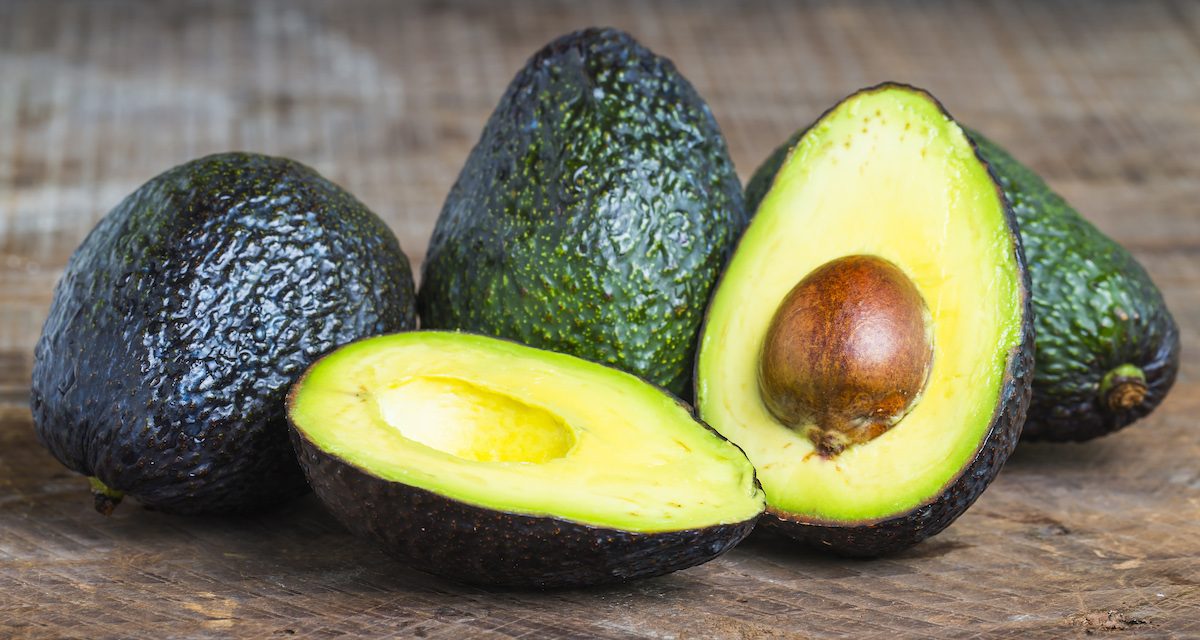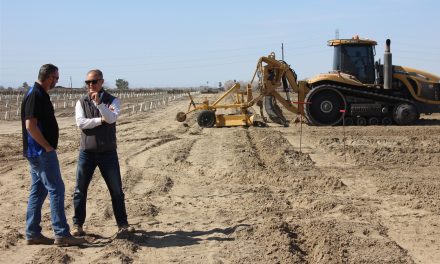California avocados now available on the market
By Caleb Hampton
California Farm Bureau Federation
CALIFORNIA — A cold spring coupled with increased imports and a persistent labor shortage has challenged California avocado growers, as many have kept fruit hanging on trees for months in search of a market opportunity.
“A lot of people are waiting to pick,” said Daryn Miller, agronomist at his family’s Villa Pacifica Ranch in San Luis Obispo County, which has yet to harvest any of this year’s crop.
California’s avocado season stretches from February through October. While the avocados may continue to grow in size, they typically do not ripen until picked, enabling farmers to store the fruit on the branches.
This year, as an oversupply drove down the prices offered by retailers and packinghouses, “growers have been hanging on, trying to keep the fruit on the trees until prices rebound,” said Terry Splane, vice president of marketing for the California Avocado Commission.
Despite strong demand, pricing has dipped as a result of increased global production, with the U.S. doubling its avocado imports over the past decade.
“It used to be that California growers could pick anytime of the year. Whenever they needed money, that’s when they picked,” said Ben Faber, University of California Cooperative Extension farm advisor for Santa Barbara and Ventura counties. “Then, Mexico came in and took over the winter market. So, Californians would pick in the late spring and summer.”
But several years after the U.S. began importing more avocados from Latin America, mostly from Peru, “that window just doesn’t exist any longer,” Faber said. “It leaves Californians searching for these little holes to sell their fruit.”
Storing the fruit on trees until prices improve can be a good strategy, growers said, but it can also pose challenges.
“You can only do it if the fruit is in good condition,” said Charley Wolk, owner and manager of Bejoca Grove in San Diego County.
This year, after historic winter storms, some growers have seen their avocados drop off the branches in the middle of the season.
“Fruit that would normally be held into July or August was dropping back in early May,” said Faber. “The fruit is ripening on the tree.”
The farm advisor added that when avocado root systems get too much water, they release a gas called ethylene that causes the fruit to ripen.
“I suspect that with all the rain, the roots got waterlogged,” he said.
The crews working in Wolk’s groves last week found many of the avocados had turned black, a sign of maturity, and some had fallen. “I don’t have any choice,” he said. “It’s either going on the ground or I’m sending it to the packinghouse.”
Other growers reported beginning to harvest this month as Mexico’s transition from one crop to another diminished supply and boosted prices. According to the U.S. Department of Agriculture, California avocado prices have nearly doubled since June 1.
“As Mexico transitions from their old crop to their new crop, supply has gotten a little shorter, so the price has recovered quite favorably,” said Sheldon Bosio, manager at Terra Bella Ranches in Santa Barbara County, which started harvesting June 12 in response to the market.
Growers noted that Mexico, through an import deal struck in 1997, has spent hundreds of millions of dollars promoting avocado consumption in the U.S., while creating steady demand for the fruit.
“We’ve got to remind ourselves that Mexico has helped us build the market we have in this country,” Miller said. “They have really contributed a significant amount, even more so than California, because they’re such a huge player in the market now.”
With Mexico providing avocados year-round, Splane said “it becomes a staple” for U.S. consumers, who make a habit of adding it to their salads, burgers and other meals. “The consumption over the past decade has skyrocketed thanks to that.”
The momentary dip in Mexican imports has coincided with the Fourth of July holiday, which drives more avocado sales than any day except the Super Bowl and Cinco de Mayo. Last week, the California Avocado Commission was ramping up its seasonal marketing campaign, promoting the local crop on billboards and public transit systems as well as on TikTok, Spotify, and Instagram.
“We’re building awareness that California avocados are available now,” Splane said. “We’re in full swing right now.”
It is the market window California growers were awaiting, but with imports from Peru expected this summer, it could be a narrow one.
“In a situation like this where the market literally shifted over a week — and who knows how long it’s going to last — whether or not you’re able to harvest could be a big deal,” Bosio said.
It isn’t always possible to pick a lot of avocados in a short timeframe. “If everyone wants to do it now, there are only so many crews to do the picking,” Faber said.
While automation has alleviated the pain of labor shortages for some agricultural commodities, avocados must be picked manually. “We don’t have any machines that shake trees or drive through the rows and selectively pick avocados,” said Wolk, noting that most avocado trees grow on slopes. “It’s pretty hard to run those machines on the sides of hills.”
The longtime San Diego County grower described an environment this year in which farm labor contractors, under pressure to get avocados harvested, are offering their workers bonuses to recruit friends.
“If I want to be pessimistic, I could suggest that we will see times here in California, in the avocado industry, when we will not be able to harvest a crop,” Wolk said. “There simply won’t be enough labor.”
The lack of workers may also shift the way avocados are grown in California. Wolk said growers are discussing keeping their trees shorter because workers with the skills to harvest fruit from 40-foot-tall trees are aging out of the workforce.
“It’s easier to train someone how to pick avocados when the tree is only 10 feet tall,” he said.
Looking ahead to next year, California growers anticipate there may be less to pick. Due to the unusually cold and overcast spring, many avocado flowers were not pollinated during the bloom in April and May, leading to a poor fruit set.
“This year is down from last year,” Bosio said, “and next year is looking down from this year.”













